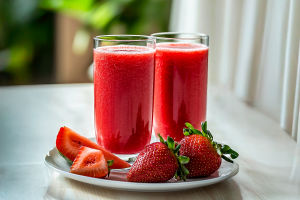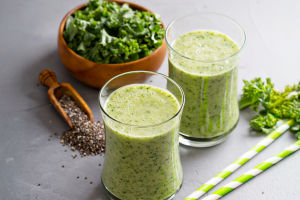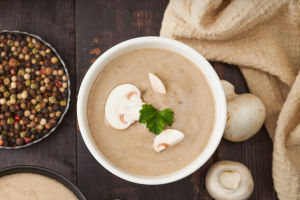let’s be honest—we all know vegetables are good for us, but sometimes we underestimate just how powerful they can be. Instead of relying on endless supplements, we can simply choose the right vegetables to give our bodies the nutrition they truly need.
Eating wisely means multiplying our energy, strengthening our bodies, and even protecting us from future health troubles. Let’s walk through ten super vegetables together and discover why they deserve a place on our plates every single day.
Spinach: The Green Champion
Spinach has been celebrated for centuries as a top vegetable. Packed with calcium, iron, vitamins, and antioxidants, it provides the foundation for strong muscles and healthy blood. Scientists have identified more than 13 types of beneficial plant compounds in spinach, which help reduce risks of heart issues, osteoporosis, and even certain serious diseases. Its folate content also supports the nervous system, making it a true “green champion” in our diet.
Kale: A Vitamin-Rich Superstar
Kale is a nutrient powerhouse. It’s loaded with vitamins A, C, K, and B2, along with important minerals such as calcium, iron, and potassium. What sets kale apart is its high selenium content, which gives it strong antioxidant abilities. By boosting good cholesterol and lowering bad cholesterol, kale helps protect our hearts. We can toss it into salads, blend it into smoothies, or add it to pasta and sandwiches. Regularly enjoying kale supports better blood pressure, healthier cholesterol levels, and improved blood sugar balance.
Asparagus: A Natural Immune Booster
Asparagus, whether the green variety above ground or the pale white kind harvested early, is one of the most balanced vegetables in terms of amino acids and minerals. These nutrients work together to regulate metabolism and strengthen our immune system. It’s also rich in vitamins A, B, and folate, as well as trace elements like selenium, iron, and zinc. Green asparagus generally carries more nutrients than the white type, but both varieties bring excellent health benefits to our table.
Broccoli: Nature’s Protector
Broccoli is often called “nature’s medicine” for a reason. Its tender stems and clustered florets are filled with compounds that may help the body fight off serious diseases. In addition, broccoli is high in fiber, which helps us feel full longer and naturally reduces overeating. Eating broccoli before our main meal can be an easy way to balance energy intake while strengthening the digestive system.
Tomatoes: The Red Shield
Tomatoes are both a fruit and a vegetable, and they become even more nutritious when cooked. They’re rich in vitamins and, most importantly, lycopene—a powerful antioxidant that helps reduce signs of aging, supports liver health, and protects blood vessels. Lycopene also promotes smoother skin and better metabolism. One note of caution: unripe tomatoes contain natural compounds that can cause discomfort, so we should always eat them when fully ripe.
Carrots: The Golden Root
Carrots, sometimes called “little ginseng,” are famous for their high beta-carotene content. Once inside our bodies, beta-carotene transforms into vitamin A, which supports eye health, skin protection, and stronger resistance against infections. Carrots also play a role in slowing down aging and boosting our body’s natural defenses. Whether eaten raw as a snack or cooked in soups and stir-fries, carrots are a sweet and versatile way to improve our diet.
Peas: The Protein Bean
Peas are sweet, starchy, and easy to store, making them one of the most convenient vegetables for everyday cooking. They are an excellent plant-based protein source, especially for those who prefer vegetarian diets. Rich in fiber, peas promote smooth digestion and support healthy gut bacteria. They also contain plant compounds that help balance blood pressure and blood sugar. Frozen peas are a kitchen lifesaver—always ready to boost the nutrition of any dish.
Beets: The Root of Life
Beets are often called the “root of life” because of their exceptional nutrition. A single serving contains proteins, natural sugars, amino acids, and plenty of magnesium, which is key to supporting healthy blood vessels and circulation. Beets are also beneficial for those with blood-related conditions, and they can help lower blood pressure. Whether eaten raw in salads or lightly cooked, beets add a rich earthy sweetness to our meals.
Pumpkin: A Bright Healer
Pumpkin is not just for pies—it’s a nutrition-packed vegetable valued around the world. It’s rich in cobalt, an element important for blood health and metabolism. Pumpkin seeds, leaves, and flesh all have benefits. The seeds, for example, support urinary health and may help with circulation. The leaves can be boiled into a light summer drink that refreshes and cools the body. Pumpkins truly prove that no part of a vegetable should go to waste.
Celery: The Soothing Green
Celery has earned the nickname “healing celery” for good reason. High in fiber, it helps sweep away excess oil from the digestive system, while also aiding natural detoxification. It’s a refreshing choice in dry seasons, helping relieve thirst and restlessness. Many of us enjoy celery raw, in soups, or stir-fried with other vegetables. Its light crunch and cooling effect make it a favorite for maintaining balance in our daily diet.
Our Healthy Future
Lykkers, these ten vegetables are far more than just side dishes—they are powerful allies for our health. By adding them to our meals regularly, we can protect our hearts, strengthen our immune systems, and enjoy greater energy every day. Next time you’re planning a meal, think of one or two of these super vegetables to include. Together, let’s embrace the natural power of fresh produce and make our plates colorful, nourishing, and delicious.
Top 10 Most Nutritious Vegetables in the World
Video by Health Med Tips


